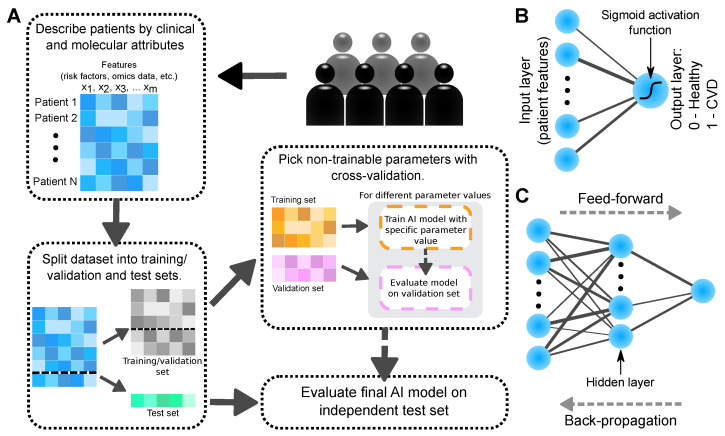Figure 2.
(A) Illustration of a typical AI workflow. Each patient is first described by the same set of numerical and/or categorical attributes (features), such as risk factors or gene expression levels. The data (patients) are then divided into training, validation and test sets. AI models with different values of non-trainable parameters (hyperparameters) are trained on the training set. The model performance is evaluated on the validation set according to some metric. A final model with the hyperparameters yielding the best validation-set performance is then evaluated on the independent test set. (B) Illustration of a perceptron neural network with a sigmoid activation function. (C) Illustration of a multi-layer neural network with one hidden layer. The arrows indicate direction of feed-forward and back-propagation passes.

